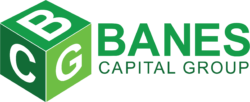Omicronal Rodeo
The markets reacted with renewed panic on the news of yet another Covid variant entering the fray. The first few reports we heard said the Omicron variant was very contagious but not very dangerous. Those continue as even follow–up reports said Omicron is mild (relative to initial Covid–19 and Delta). The markets didn’t hear that – they reacted on fears that there would be more shutdowns and travel restrictions. Stocks nose–dived into their cycle low that was due on the 3rd as Omicron became the catalyst for the selloff. Like others, this variant became a ‘scariant.’
Quick Links
The FOMC meeting that concluded on November 3rd was followed by a statement and comments by Fed Chief Jerome Powell that were still of a dovish tone. (He leaned further to that camp with the emergence of Omicron.) Even as of that meeting, the Fed was holding on to their stance that inflation largely reflected ‘factors’ they expected to be temporary. Fed sentiment has mostly shifted to the hawkish side now – even though the November payroll numbers were somewhat disappointing. The White House provided continuity in renominating Powell to a second term as Chair and promoting Governor Lael Brainard to Vice Chair. Those nominations should each receive confirmation from the Senate without much difficulty. The FOMC minutes said the decision to taper purchases was unanimous and that “some participants” wanted to end purchases faster than the previous plan for a mid–2022 timeframe.
However, “many participants” thought higher prices would prove to be more ‘persistent.’ The Fed risked losing credibility (and may have) in denying that inflation numbers at multi–decade highs had sticking power. Persistent seems the better word. They finally capitulated after steadfastly claiming inflation was temporary – and then that the causal factors were such. There are times when the masses clearly see things that academics are missing. This bout with ‘transitory’ was a prime example. It almost got as embarrassing as when an addict is in complete denial of a circumstance. Powell testified before the Senate Banking Committee and announced the Fed would bury the term ‘transitory.’ Powell said it was time to retire the word because Americans thought it meant “short term” – which was not the Fed’s intention. The Bond Market Review would reply ‘poppycock!’ The dictionary refers to ‘transitory’ as a middle–school level word with that very definition: lasting only a short time; brief; short–lived; temporary.
With the admission that inflation has checked in for an extended stay, the Fed cleared the way for a faster QE taper and rate hikes. While even recently, tightening was not expected until 2023 or 2024 – the Fed’s capitulation to higher prices and market forces have many thinking at least 2 rate hikes could come in 2022. Powell told the Senate they might wrap up the taper of asset purchases “perhaps a few months sooner.” That could mean an initial rate hike could come as early as May 2022. The markets are wondering how to plan for a now hawkish Powell – having seen only the dovish side for the past few years.
Looking Ahead
- Equity cycles have another high due near December 16th/17th.
- Bond yields have a low due near December 15th/16th and could then rise into a 23rd/28th window.
- The FOMC will update their interest–rate and tapering policies on Wednesday (12/15) at 2 m. ET.
The Fed’s Beige Book said: “Economic activity grew at a modest to moderate pace in most Federal Reserve Districts during October and early November. Several Districts noted that despite strong demand, growth was constrained by supply chain disruptions and labor shortages.” They noted that certain businesses had improved outlooks as the “spread of Delta ebbed in many areas.” Many businesses were still operating limited hours due to “a lack of workers.” They said: “Prices rose at a moderate to robust pace, with price hikes widespread across sectors of the economy.” Q4 growth is going well so far. The Atlanta GDP–Now forecast began at 6.6% and is currently 8.7%! GDP for Q3 was revised from 2.00% to 2.10%. Personal Consumption was raised from 1.60% to 1.70%. The Q3 GDP Price Index was adjusted .20% higher to 5.90% though Core PCE remained at 4.50%.
Inflation Nations
Not only is inflation persistent, it’s digging in its heels. Simply put, the Fed’s favorite inflation gauge (the PCE Deflator) is near 30–year highs and Consumer Prices are the highest since 1982. The headline annual PCE Deflator rose .60% to 5.00% and CPI jumped that same .60% to 6.80%. Those are solid reasons to jump the transitory ship. Even Euro area inflation jumped .83% to a record–high 4.88% – with energy leading the way. The FOMC will announce their updated interest–rate and asset–purchase taper plans on Wednesday. To maintain consistency with their recent narrative, they need to double down on tapering – which should wind up purchases in time to gear up for rate hikes by May – if not sooner.
Treasuries, Agencies, and MBS
Senators agreed on a funding deal that would once again raise the debt ceiling and take talk of U.S. default off the table. China’s Evergrande defaulted as widely expected – and this could greatly trouble China’s real estate markets. Since they are (were) the largest private debtor (around $300 billion), the effects of the default could spill over to global markets. China’s junk bond yields have recently gone from the mid–7% level to over 20%. Our yield cycles had rates rising into November 18th/19th – which they did. However, after falling for a few sessions, they hit a higher peak and then dove into the end–of–month cycle. With the Omicron catalyst, yields fell with stocks into December 3rd and have risen since. Yields should drop for a few sessions and then rise into the 23rd/28th.
We thought the claim that new stimulus would have zero cost was ridiculous. For many years, the government was known to tax & spend. Those actions turned into tax & spend – and spend even more. Since the pandemic, politicians have used that backdrop to rack up deficits near $3 trillion. November’s Monthly Treasury Statement deficit was $191.335 billion, far greater that October’s $165.055 billion, but still lagging fiscal 2021 2–months in by 16.99%. The fiscal 2022 deficit is ahead of fiscal 2020 by 104% and, when the costs of the new Build Back package gets filtered in, we would expect another $3 trillion monster. With the debt ceiling out of the way, there’s little to impede the spenders. Late last week, the Congressional Budget Office calculated the ultimate cost of the package to be around $3.0 trillion as we thought. That’s the expected impact over the next 10 years despite the higher tax rates that are coming. One of our concerns is that each 25–bps rate hike adds about $75 billion in annual debt service as the national debt approaches $30 trillion. If the Fed does hike 2 or 4 times, that would be an extra $150 billion to $300 billion per year added to the debt burden of each burgeoning fiscal deficit – with no end (and certainly no surplus) in sight.
Into December 3rd, 2–year yields rose a sharp 9 bps while 5, 10, and 30–year rates were lower by 2.5, 13, and 15 bps. The shock loss in stocks into the cycle low, and fears of the Omicron variant, had the markets on edge. However, they reversed in a near–violent fashion. Last week, yields higher by 6.5, 12, 14, and 20.5 bps in a curve–steepening move for the 2, 5, 10, and 30–year sectors. Those sectors saw yields drop by 2, 4.5, 6.5, and 8 bps today. Freddie Mac 30–year mortgage rates have steadied with the last 3 readings up and down from 3.10% to 3.11% and back to 3.10%. 15–year rates dropped from 2.42% to 2.39%, and then fell to 2.38% this past week.
On 11/22 the U.S. Treasury sold $58 billion 2–year notes at .623% with demand falling significantly versus recent auctions. The buying group that includes foreign central banks bought only 45.62% – well down from October’s 58.14%. Also that day, $59 billion 5–year notes came at 1.319% in another rough auction. That was the highest yield since January 2020. Demand once again fell sharply versus recent offerings. Foreign buying fell from 64.8% in October to 56.9% of this issue. The $59 billion 7–year note auction followed on 11/23, bringing 1.588% in a well– received manner. The yield was the highest since December 2019. Demand was the best since September 2020 and foreign buying fell from 63.9% to 59.3%. Last week, $54 billion 3–year notes brought 1.00% on Tuesday (12/07). Demand was the best since September with foreign buying dropping from 59.0% to 52.2%. $36 billion 10–year notes followed on Wednesday, bringing 1.518% for the reopened November 2041 maturity. Demand rose versus last month though foreign allocations fell from 71.0% to 68.6%. On Thursday, $22 billion 30–year bonds brought 1.895%. Demand was low with foreign buying rising from 59.0% to 60.8% in this reopening of the November 2051 maturity.
Economics
ADP Employment Change showed private payrolls beat expectations of 525K with 534K jobs added in November. Challenger Job Cuts fell by 77% versus November 2020 – to the lowest level (less cuts) since 1993. JOLTS Job Openings rose from 10.602 million in September to 11.033 million in October. That left the available jobs at the highest–ever spread versus unemployed workers. That was higher than expectations and the quits rate dropped for the first time since May – indicating employers were more able to retain workers. Nonfarm Payrolls had a huge miss with only 210K jobs created versus 550K expected. The disparity was partially attributed to seasonal factors. The 2– month revision was an addition of 82K jobs. Private Payrolls added 235K workers (versus 536K expected) and Manufacturing gained 31K. The U.S. Unemployment Rate fell from 4.60% to 4.20%. The Labor Force Participation Rate increased from 61.6% to 61.8%. The Underemployment Rate fell from 8.3% to 7.8%. Average Hourly Earnings rose by .30%. On an annual basis, earnings were steady at a 4.80% increase. Compared to the PCE Deflator at 5.00% and CPI at 6.80%, wages are not keeping pace. Average Weekly Hours rose from 34.7 to 34.8.
Consumer Credit growth slowed from $27.623 billion in September to $16.897 billion in October – missing expectations of $25 billion. Credit card usage rose by $6.582 billion compared to $9.8 billion in September. Vehicle Sales fell in November – dropping from 12.99 million annual units to 12.86 million and missing expectations of 13.45 million by a large margin.
Initial Jobless Claims fell to 52–year lows, partially due to seasonal factors. Claims fell from 270K down to 194K, the lowest since 1969 for the week of November 20th. They spiked up to 227 the week after, and then fell to a fresh multi–decade low of 184K this past week. Continuing Claims fell 46K to a pandemic low of 2.063 million into November 13th. They then tumbled 109K to a new pandemic low of 1.954 million before rising 38K to 1.992 million with last week’s release. The total Americans on benefits once again fell below 2 million with this release.
CEO confidence rose to a record on the outlook for sales, hiring, and capital investment. Consumer Comfort rose from 50.7 to 52.2 but then steadied back to 51 for the past 2 weeks. The State of the Economy is lower than 2 weeks ago by .9. Personal Finances have dropped 2.9 points over 2 weeks to 64.3. The Buying Climate fell .1 to 44.6 and was then unchanged last week. The Conference Board’s Consumer Confidence survey dropped from 111.6 to 109.5. Their Present Situation survey dropped from 145.5 to 142.5 (the lowest since April) and Expectations fell from 89 to a 5–year low of 87.6. University of Michigan Sentiment fell from 71.7 to a decade–low 67.4 on inflation concerns and declining living standards. Current Conditions dropped from 77.7 down to 73.6. Expectations fell from 67.9 to 63.5 and inflation readings remained at 4.90% – the highest since 2008. Preliminary December data saw a 3–point increase in Sentiment (to 70.4), a 1–point gain in Current Conditions, and a promising increase from 63.5 to 67.8 in Expectations. (Maybe Michigan making the playoffs tilted the scales.) Inflation forecasts remained at 4.90%. MNI Chicago PMI (purchasing managers) fell from 68.4 to 61.8. The Chicago Fed National Activity Index rose from –.18 to +.76. Richmond Fed Manufacturing fell from 12 to 11 and Dallas dropped from 14.6 to 11.8.
ISM Manufacturing rose from 60.8 to 61.1. Prices Paid actually fell from 85.7 to 82.4. New Orders rose from 59.8 to 61.5 and the Employment gauge was 1.3 points higher to 53.3. October Factory Orders rose by 1.00% and by 1.60% ex transportation. Orders for Durable Goods fell by .40% but were up .50% ex transportation. Orders for Capital Goods showed business investment rising by .70%. Nonfarm Productivity fell 5.20% in Q3. Unit Labor Costs rose by 9.60%. Though the sector is still troubled by supply chain issues, labor, and inflation, the ISM Services Index rose from 66.7 to a record–high 69.1.
In October, Personal Income rose by .50% but Personal Spending jumped by 1.30% – driving the savings rate down to pre–pandemic levels. The PCE Deflator rose by .60% in October, accelerating the annual pace from 4.40% to 5.00%. Core PCE (ex food & energy) rose by .40% – which quickened the annual pace from 3.70% to 4.10%, the highest rate since 1991 for the inflation gauge most followed by the Fed. November Consumer Prices rose .80%, accelerating headline annual CPI up from 6.20% to 6.80% – the quickest pace in almost 40 years. Energy rose 3.5% for the month. Core CPI rose .50% – taking the annual core pace from 4.60% to 4.90%. Considering inflation, Hourly Earnings fell 1.90% on an annual basis. Weekly Earnings were off by that same mark.
The House Price Purchase Index rose 4.20% in Q3 3021. The FHFA House Price Index increased by .90% in September. Metro home prices rose .96%. That S&P Case–Shiller 20–City index cooled from an annual 19.65% gain to 19.05%. Their National Home Price Index also slowed from 19.79% to an annual pace of 19.51%. October’s sales of Existing Homes rose .79% to a 9–month–high 6.34 million annual units. The median selling price rose to $353,900. Sales of New Homes rose by .40% in October to 745K annual units – but only because of a 58K downward revision for September. Otherwise, sales would have been down by 6.88%. Median prices hit a record high $407,700. Pending Home Sales rose 7.50% to the best levels of 2021. Construction Spending rose .20% in October.
The Trade Balance deficit dropped from $81.4 billion in September to $67.1 billion in October. The Merchandise Trade deficit (Advance Goods Trade Balance) also fell back from $97.0 billion in September to $82.9 billion in October. Wholesale Inventories rose 2.30% and Trade Sales rose 2.20%. In Q3, the Household Change in Net Worth rose by $2.362 trillion – far less than half of Q2’s $6.141 billion, but still to another record high of $145 trillion.
Tuesday is set for NFIB Small Business Optimism and Producer Prices (November PPI). Wednesday follows with the FOMC interest–rate policy decision – which should also provide insight into their pace of tapering asset purchases. Also due are MBA Mortgage Applications (which fell by 7.2% and then rose by 2.0% over the past 2 weeks), Empire (New York) Manufacturing, November Retail Sales, Import Prices, homebuilder outlook (NAHB Housing Market Index), and TIC Flows (net foreign transactions into U.S. assets). Thursday gives us jobless claims data, November Housing Starts & Building Permits, the Philadelphia Fed Business Outlook, Industrial Production & Capacity Utilization, Consumer Comfort, and Kansas City Fed Manufacturing Activity. Next Monday (12/20) brings the November Leading Index.
Equities
After the pandemic–low surge that saw stocks more than double from March 2020 into November, momentum finally slowed. As of November, the ‘straight up’ market has been challenged with the Dow Industrials having been ‘up down up down’ for the last 4 months. Stocks topped with our earlier November cycles with the Dow making its high on the 8th. On what is normally called ‘Black Friday’ for retailers finally anticipating annual profits on the books the day after Thanksgiving, the Dow dropped over 900 points in what instead got termed ‘Red Friday!’
The S&P and other indexes dropped into our December 3rd cycle – and then vaulted higher after making lows right on that expected trend–change date. The Dow and some other indices bottomed a day or two before the 3rd. The Dow had lost 2,558 points or 7.00% versus that November 8th high but then recovered 1,975 points or 5.81% into Friday’s close.
Following the Omicron selloff, the S&P had its best week in 10 months with a 3.82% gain. The S&P ended last week at a record high close (as did the S&P 100). The S&P had previously made 5 higher highs, but Friday saw a record high close. Most other indices including the Dow and Nasdaq are weaker positions. The Russell 2000 is off around 11.32%, midcaps are 5.99% off their highs, and small caps are off about 8.36%.
After last week’s surge, stocks were very weak on this Monday. The Dow Industrials lost .89% and the Nasdaq was off by 1.39%. Bank stocks gave up all of last week’s gains. Over the past 2 weeks, the Dow lost .91% and then surged 1,390.91 points or 4.02% to 35,970.99. The S&P lost 1.22% but then rebounded 3.82% last week. The S&P fell .91% today. The Nasdaq fell 2.62% and then rallied 3.61%. The Dow Transportation index lost 1.53% and then gained 2.74%. The Transports dropped 1.18% today. Bank stocks lost 3.21% and then rallied 2.23% last week. They lost 2.30% today.
Other Markets
Our precious–metals cycles are bottoming on the 16th. Gold traded to a 4–week low on December 2nd and has since been holding sideways. Bitcoin could show weakness into a more important low near January 22nd with another trend–change high near December 28th. If crypto is trading up into the 28th, it might be a good time to cover and get back in around January 22nd. On a closing basis, Bitcoin has already lost 30.83% versus its November 8th high.
Commodities lost 2.68% but then gained 2.39% over the past 2 weeks. They were .25% lower today. Crude Oil fell 10.45% and 2.77% into December 3rd but rallied 8.16% last week. Crude was .53% lower today. Gold lost .20% and then gained .05% last week. Gold was .19% higher today. The U.S. Dollar gained .01% and then lost .01% last week. It rose .25% today. A few weeks ago, the Dollar hit 17–month highs. The Euro had back–to–back losses of .02% before dropping .26% today. The Japanese Yen gained .51% and then lost .57% last week. It was .09% lower today. Corn lost .13% but gained .43% last week. It tumbled .72% today. Cotton had losses of 6.26% and 2.81% the past 2 weeks but gained .55% today.
“One of the keys to happiness is a bad memory.” Rita Mae Brown
“The art of medicine consists in amusing the patient while nature cures the disease.” Voltaire
Doug Ingram, Financial Economist
Additional Information is Available on Request
Banes Capital Group, LLC (BCG) has been granted permission by the author, Doug Ingram and Strategic Technical Initiatives, to distribute this market commentary (MC). All views, opinions and estimates included are his as of this date – and are subject to change without notice. Mr. Ingram’s views, opinions, and estimates are not necessarily those of BCG and there is no implied endorsement by BCG of any of the information contained within this MC (which may in fact directly conflict with those being published and distributed by BCG, whether or not contemporaneous). In the event of such conflict, BCG is not under any obligation to identify to you any such conflicts. This MC is for informational purposes only and does not constitute a solicitation or offer to buy or sell any securities, futures, options, foreign exchange or any other financial instrument(s) and/or to provide any investment advice and/or service. Although the information presented has been obtained from sources believed to be reliable, we cannot guarantee or assume any responsibility for the accuracy or completeness of the information shown herein.







